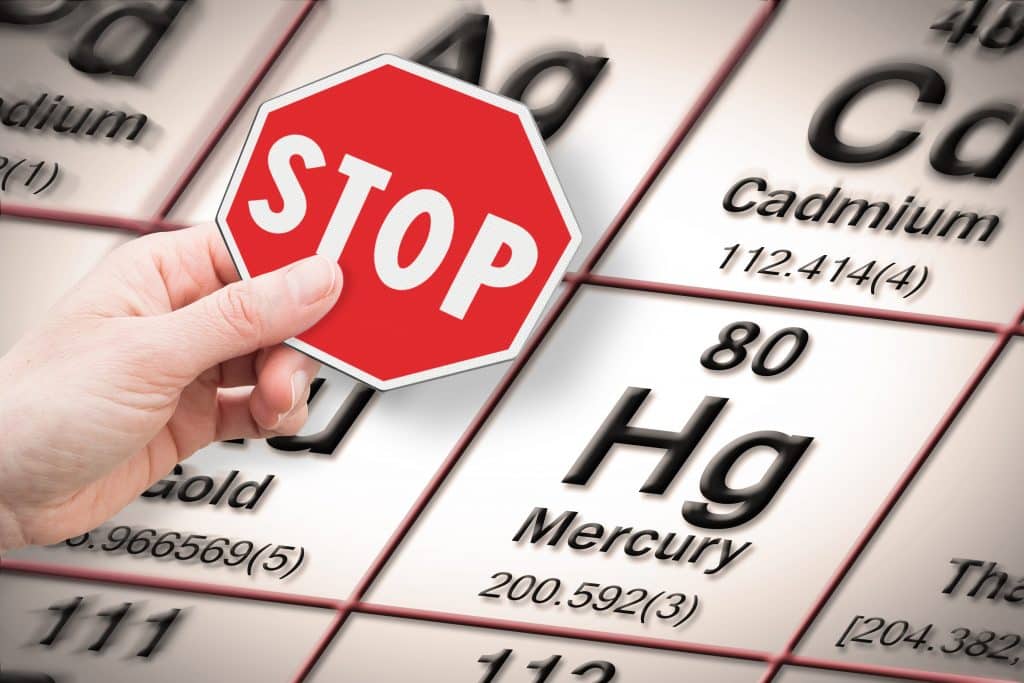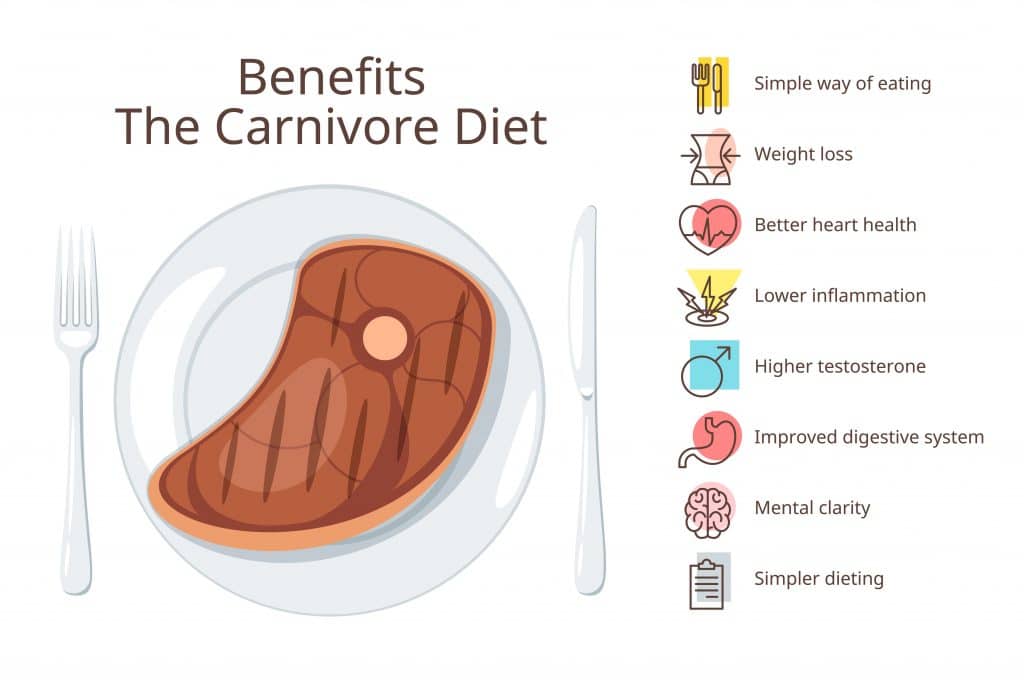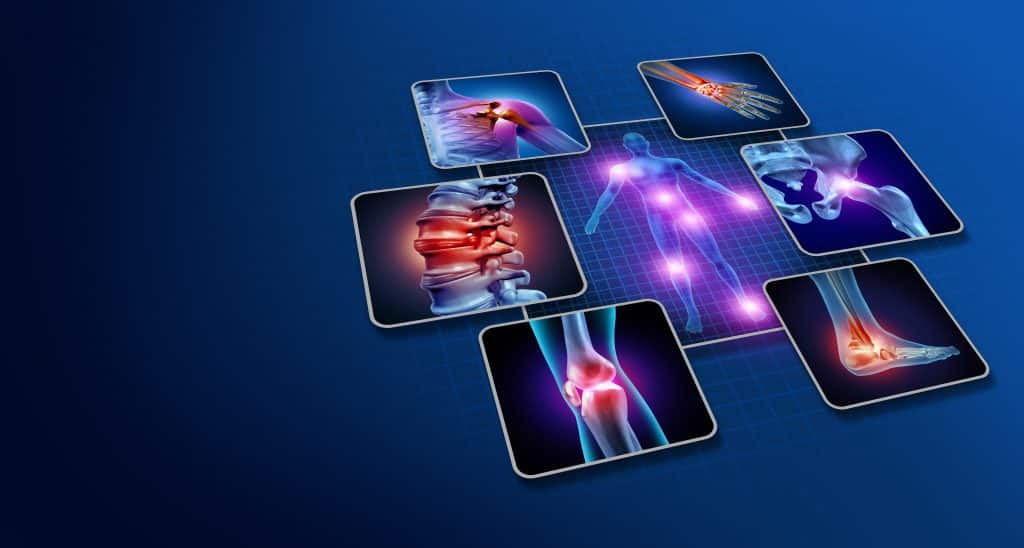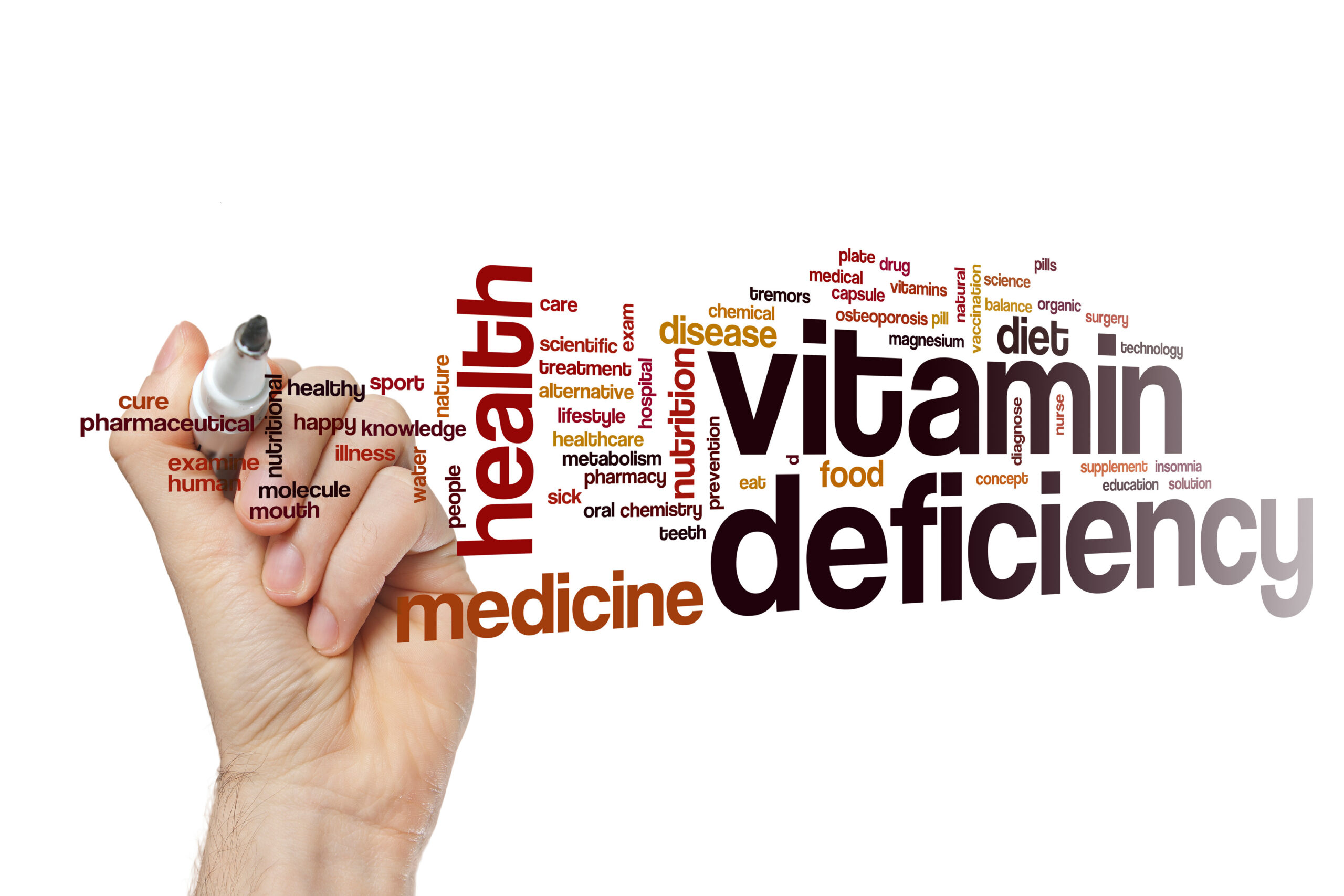How To Stop Inflammation – Toxins, Diet, And Fasting
The only way to end suffering from a wide range of diseases is to stop inflammation, the driving factor. Inflammation is a natural immune response to protect us from foreign invaders, such as bacteria and viruses. However, when inflammation becomes chronic and persistent, it can cause serious damage to the body. To combat this, there are several strategies one can take to reduce inflammation and protect their health.
Inflammation contributes to a wide variety of diseases, some of which are becoming increasingly common and severe. Chronic inflammatory diseases are responsible for more than half of all deaths worldwide.1 Some of the conditions associated with inflammation include autoimmune diseases such as rheumatoid arthritis, cardiovascular diseases including high blood pressure and heart disease, gastrointestinal disorders like inflammatory bowel disease, lung conditions such as asthma, mental health conditions like depression, and neurodegenerative illnesses.2
Stop Inflammation And Get Your Life Back
So many health conditions all have one thing in common, inflammation. Inflammation not only plays a key role in many illnesses, but it is also the underlying cause of much of the global burden of disease. Therefore, understanding how inflammation works and how to manage it is essential for improving our health and finding relief from chronic illnesses.
Read more about the cause and solution to autoimmune disorders.
Stop Inflammation – Toxins
One of the most important ways to reduce inflammation is to reduce exposure to toxins. Toxins, such as heavy metals, chemicals, and mold all cause inflammation. These toxins can be found in many everyday products like dental fillings, the food we eat, food containers, carpets, cleaning supplies, and even in the air we breathe. Avoiding these toxins is the first step to being able to stop inflammation.
Read more about the common toxins we are all exposed to.

Heavy Metals Cause Inflammation
Heavy metals enter the body and cause inflammation.3 Products that contain heavy metals are being phased out, but they are still present in dangerous quantities throughout our environment. These toxins often find their way into our food supply, water supply, the air we breathe, and even products we use on a daily basis. To reduce the presence of heavy metal toxins in your body and to prevent unwanted inflammation, it’s important to become aware of the sources of these toxins and to actively avoid them as much as possible.
To stop inflammation, it is imperative to remove heavy metals from the body. However, this is easier said than done, as the heavy nature of these elements makes them hard to excrete. Furthermore, heavy metals are transported into cells where they reduce cellular function and cause cellular membrane inflammation that results in hormone resistance.4
Hormone resistance causes hormones like thyroid hormone and insulin to be unable to relay their message to the cells. The result of hormone resistance is thyroid disorder, weight loss resistance, and sex hormone dysfunction.5 Since heavy metals are contained inside cells, it makes it even harder to remove them from the body, as they must first be transported out of cells before they can be eliminated from the body.
Chelation therapy, with a true chelator, is the key to binding heavy metals and excreting them from the body.6 Read more about removing heavy metals from the body and why you should avoid common, yet dangerous and ineffective chelation methods that are commonly promoted.

Eating Commercially Farmed Food Is Linked With Inflammation
Pesticides, herbicides, and fertilizers used in conventional farming have been linked to increased inflammation and disease. However, the good news is that a study on rats indicated that alpha lipoic acid (ALA), a powerful antioxidant, reverts inflammation in the brain caused by pesticides by decreasing free radical damage and modulating gene expression.8
Food Containers Linked To Inflammation
In addition to endocrine-disrupting chemicals, food containers may also contain toxic substances that can accumulate in the body and cause inflammation. These toxins include phthalates, bisphenols, and polychlorinated biphenyls (PCBs).9 10 11 These substances can leach into food during cooking, especially if the container has been heated to high temperatures. Specifically, studies have found that people who frequently eat microwaved meals are at higher risk of developing inflammation-related problems.12
Stop Inflammation By Reducing Exposure To Environmental Pollution
Environmental pollutants, such as smog, also contain toxins that can cause inflammation.13 These pollutants can be found in air and water, so it is important to limit your exposure by avoiding polluted areas and choosing filtered water when possible.
Moldy Air Is Linked With Inflammation
Exposure to mold within a confined area like a building can trigger inflammation.14 If you live in a damp or poorly-ventilated area, it is important to take steps to prevent and reduce mold growth.
Ideally, get your house tested for mold and if it contains mold, remove it completely. After the mold is removed, get the house tested again for mold and if mold still persists and can’t be removed adequately, the only option is to move to another location that doesn’t have mold issues.
While it may seem extreme to have to move due to mold growth, the mycotoxins released by mold are absolutely disastrous for your health and need to be eliminated if you ever wish to stop inflammation and receive relief from a wide range of chronic illnesses.
The mycotoxins released by mold are so harmful that structural brain abnormalities are present in individuals who are suffering from inflammatory diseases after they were exposed to water-damaged buildings. Specifically, “mold exposure increased the permeability of the blood-brain barrier due to chronic systemic inflammation”.15
Learn more about the harmful effects of mold and how to reduce your exposure to this toxin.

Household Chemicals And Inflammation
Recent research has discovered a link between using everyday household chemicals and systemic inflammation. Many cleaning products contain substances known as endocrine-disrupting chemicals (EDCs), which have been linked to chronic inflammation. Common EDCs found in household products include phthalates, bisphenols (BPA), parabens, and triclosan.16
Long-term exposure to these chemicals can lead to systemic inflammation, which has been linked to a variety of diseases including asthma, and cardiovascular disease.17 18 19 20 EDCs are also directly linked with weight loss resistance.21 EDCs can enter our bodies through inhalation, ingestion, or absorption through the skin. Controlling your exposure to these chemicals is important for reducing inflammation and promoting health.
The best way to reduce exposure to EDCs is to avoid products that contain them. Many cleaning products, cosmetics, and other personal care items list their ingredients on the labels. However, many of these products aren’t required to include propriety ingredients on the labels.
Additionally, you can take preventive measures such as ventilating your home regularly, avoiding aerosol sprays, and using gloves when handling household chemicals. However, avoiding products with EDCs and opting for cleaner, more natural alternatives is by far the best strategy. By taking control of your exposure to EDCs, you can reduce inflammation in your body and promote better health.
Read more about the health-damaging effects of cleaning products and cosmetics.

Stop Inflammation – Diet
In addition to reducing toxin exposure, diet plays an important role in reducing inflammation. Foods that are anti-inflammatory, such as low-glycemic fruits and vegetables, nuts, and fatty fish like salmon, can help reduce systemic inflammation. A balanced diet that is low in processed foods and high in anti-inflammatory foods is key to lowering inflammation levels.
Consuming organic foods helps reduce exposure to chemicals used in commercial farming and can help decrease symptoms of inflammation. Eating anti-inflammatory foods like grass-fed meat, vegetables, nuts and seeds, fish, olive oil, and certain spices like turmeric can also help reduce chronic inflammation.22 23 24
Stop Inflammation With The Carnivore Diet
The carnivore diet is an effective way to reduce inflammation by eliminating typical sources of dietary-induced inflammation. This diet consists of only animal-based foods such as beef, poultry, fish, eggs, and some dairy products. By removing most plant-based foods from the equation, many individuals have been able to significantly reduce their pain and discomfort from chronic inflammation. This is due to the fact that plant-based foods such as grains, legumes, and certain fruits and vegetables contain substances called lectins which can trigger inflammation in some people.25
The carnivore diet focuses on nutrient-dense animal proteins which are known for their anti-inflammatory properties. These proteins help reduce inflammation by providing the essential fatty acids, amino acids, and vitamins needed for proper immune system functioning. Additionally, animal-based proteins are also rich in zinc and selenium which help fight off infection and also have anti-inflammatory properties.
The carnivore diet may be especially beneficial for individuals with chronic inflammation as it eliminates many of the highly processed foods and refined carbohydrates that can worsen inflammation. In a 2021 study, with more than 2,000 participants, 89% reported relief from autoimmune conditions that are a result of unchecked inflammation after following the carnivore diet for 6 months.26

Stop Inflammation – Fasting
Fasting is an exceptional strategy for reducing inflammation. During fasting, the body is able to take a break from constantly digesting food and instead focus its efforts on healing and restoring balance. Research has found that intermittent fasting, or periods of abstinence from food, can reduce inflammation in the body.27
Resetting The Inflammatory Cycle
After identifying toxins, avoiding them, and removing them from your body, the next step is to reset the inflammatory cycle back to default. Even after the factors that cause chronic inflammation have been removed, inflammation persists due to a complicated cycle known as the NO/ONOO cycle.28
Fortunately, there are a number of supplements that can reset the inflammatory cycle back to default. This stage is when many people begin to feel instant relief from their chronic inflammatory-based diseases. Read more about stopping the inflammatory NO/ONOO cycle.

Stop Inflammation – Toxins, Diet, And Fasting
By reducing toxin exposure, eating an anti-inflammatory diet, introducing regular fasting into your routine, and resetting the inflammatory NO/ONOO cycle, you can stop inflammation and regain your health.
Read more about autoimmune conditions.
References
1 Furman D, Campisi J, Verdin E, Carrera-Bastos P, Targ S, Franceschi C, Ferrucci L, Gilroy DW, Fasano A, Miller GW, Miller AH, Mantovani A, Weyand CM, Barzilai N, Goronzy JJ, Rando TA, Effros RB, Lucia A, Kleinstreuer N, Slavich GM. 2019. Chronic Inflammation in the Etiology of Disease Across the Life Span. Nature Medicine. 25(12):1822–1832.
2 Inflammation. (n.d.). National Institute of Environmental Health Sciences. https://www.niehs.nih.gov/health/topics/conditions/inflammation/index.cfm
3 Cortés, S., Zúñiga-Venegas, L., Pancetti, F., Covarrubias, A., Ramírez-Santana, M., Adaros, H., & Muñoz, L. (2021). A Positive Relationship between Exposure to Heavy Metals and Development of Chronic Diseases: A Case Study from Chile. International journal of environmental research and public health, 18(4), 1419. https://doi.org/10.3390/ijerph18041419
4 Foulkes E. C. (2000). Transport of toxic heavy metals across cell membranes. Proceedings of the Society for Experimental Biology and Medicine. Society for Experimental Biology and Medicine (New York, N.Y.), 223(3), 234–240. https://doi.org/10.1046/j.1525-1373.2000.22334.x
5 Rana S. V. (2014). Perspectives in endocrine toxicity of heavy metals–a review. Biological trace element research, 160(1), 1–14. https://doi.org/10.1007/s12011-014-0023-7
6 Miller A. L. (1998). Dimercaptosuccinic acid (DMSA), a non-toxic, water-soluble treatment for heavy metal toxicity. Alternative medicine review : a journal of clinical therapeutic, 3(3), 199–207.
8 Astiz, M., de Alaniz, M. J., & Marra, C. A. (2012). The oxidative damage and inflammation caused by pesticides are reverted by lipoic acid in rat brain. Neurochemistry international, 61(7), 1231–1241. https://doi.org/10.1016/j.neuint.2012.09.003
9 Koniecki D, Wang R, Moody RP, Zhu J. Phthalates in cosmetic and personal care products: concentrations and possible dermal exposure. Environ Res. 2011 Apr;111(3):329-36. doi: 10.1016/j.envres.2011.01.013. Epub 2011 Feb 18. PMID: 21315328.
10 Nowak K, Ratajczak-Wrona W, Górska M, Jabłońska E. Parabens and their effects on the endocrine system. Mol Cell Endocrinol. 2018 Oct 15;474:238-251. doi: 10.1016/j.mce.2018.03.014. Epub 2018 Mar 27. PMID: 29596967.
11 Petriello, M. C., Brandon, J. A., Hoffman, J., Wang, C., Tripathi, H., Abdel-Latif, A., Ye, X., Li, X., Yang, L., Lee, E., Soman, S., Barney, J., Wahlang, B., Hennig, B., & Morris, A. J. (2018). Dioxin-like PCB 126 Increases Systemic Inflammation and Accelerates Atherosclerosis in Lean LDL Receptor-Deficient Mice. Toxicological sciences : an official journal of the Society of Toxicology, 162(2), 548–558. https://doi.org/10.1093/toxsci/kfx275
12 Yang, C. Z., Yaniger, S. I., Jordan, V. C., Klein, D. J., & Bittner, G. D. (2011). Most plastic products release estrogenic chemicals: a potential health problem that can be solved. Environmental health perspectives, 119(7), 989–996. https://doi.org/10.1289/ehp.1003220
13 Air Pollution and Your Health. (2023). National Institute of Environmental Health Sciences. https://www.niehs.nih.gov/health/topics/agents/air-pollution/index.cfm
14 Kraft, S., Buchenauer, L., & Polte, T. (2021). Mold, Mycotoxins and a Dysregulated Immune System: A Combination of Concern?. International journal of molecular sciences, 22(22), 12269. https://doi.org/10.3390/ijms222212269
15 Shoemaker, R. C., House, D., & Ryan, J. C. (2014). Structural brain abnormalities in patients with inflammatory illness acquired following exposure to water-damaged buildings: a volumetric MRI study using NeuroQuant®. Neurotoxicology and teratology, 45, 18–26. https://doi.org/10.1016/j.ntt.2014.06.004
16 Endocrine Disruptors. (2022). National Institute of Environmental Health Sciences. https://www.niehs.nih.gov/health/topics/agents/endocrine/index.cfm
17 Paciência, I., Cavaleiro Rufo, J., Silva, D., Martins, C., Mendes, F., Farraia, M., Delgado, L., de Oliveira Fernandes, E., Padrão, P., Moreira, P., Severo, M., Barros, H., & Moreira, A. (2019). Exposure to indoor endocrine-disrupting chemicals and childhood asthma and obesity. Allergy, 74(7), 1277–1291. https://doi.org/10.1111/all.13740
18 Vuong, A. M., Braun, J. M., Sjödin, A., Calafat, A. M., Yolton, K., Lanphear, B. P., & Chen, A. (2021). Exposure to endocrine disrupting chemicals (EDCs) and cardiometabolic indices during pregnancy: The HOME Study. Environment international, 156, 106747. https://doi.org/10.1016/j.envint.2021.106747
19 Wan, M. L. Y., Co, V. A., & El-Nezami, H. (2022). Endocrine disrupting chemicals and breast cancer: a systematic review of epidemiological studies. Critical reviews in food science and nutrition, 62(24), 6549–6576. https://doi.org/10.1080/10408398.2021.1903382
20 Lind, P. M., & Lind, L. (2018). Endocrine-disrupting chemicals and risk of diabetes: an evidence-based review. Diabetologia, 61(7), 1495–1502. https://doi.org/10.1007/s00125-018-4621-3
21 Choi, S. I., Kwon, H. Y., Han, X., Men, X., Choi, Y. E., Jang, G. W., Park, K. T., Han, J., & Lee, O. H. (2021). Environmental obesogens (bisphenols, phthalates and parabens) and their impacts on adipogenic transcription factors in the absence of dexamethasone in 3T3-L1 cells. The Journal of steroid biochemistry and molecular biology, 214, 105994. https://doi.org/10.1016/j.jsbmb.2021.105994
22 McAfee, A. J., McSorley, E. M., Cuskelly, G. J., Fearon, A. M., Moss, B. W., Beattie, J. A., Wallace, J. M., Bonham, M. P., & Strain, J. J. (2011). Red meat from animals offered a grass diet increases plasma and platelet n-3 PUFA in healthy consumers. The British journal of nutrition, 105(1), 80–89. https://doi.org/10.1017/S0007114510003090
23 Marcelino, G., Hiane, P. A., Freitas, K. C., Santana, L. F., Pott, A., Donadon, J. R., & Guimarães, R. C. A. (2019). Effects of Olive Oil and Its Minor Components on Cardiovascular Diseases, Inflammation, and Gut Microbiota. Nutrients, 11(8), 1826. https://doi.org/10.3390/nu11081826
24 He, Y., Yue, Y., Zheng, X., Zhang, K., Chen, S., & Du, Z. (2015). Curcumin, inflammation, and chronic diseases: how are they linked?. Molecules (Basel, Switzerland), 20(5), 9183–9213. https://doi.org/10.3390/molecules20059183
25 Gong, T., Wang, X., Yang, Y., Yan, Y., Yu, C., Zhou, R., & Jiang, W. (2017). Plant Lectins Activate the NLRP3 Inflammasome To Promote Inflammatory Disorders. Journal of immunology (Baltimore, Md. : 1950), 198(5), 2082–2092. https://doi.org/10.4049/jimmunol.1600145
26 Belinda S Lennerz, Jacob T Mey, Owen H Henn, David S Ludwig, Behavioral Characteristics and Self-Reported Health Status among 2029 Adults Consuming a “Carnivore Diet”, Current Developments in Nutrition, Volume 5, Issue 12, December 2021, nzab133, https://doi.org/10.1093/cdn/nzab133
27 Research on intermittent fasting shows health benefits. (2020, February 27). National Institute on Aging. https://www.nia.nih.gov/news/research-intermittent-fasting-shows-health-benefits
28 Pall M. L. (2013). The NO/ONOO-cycle as the central cause of heart failure. International journal of molecular sciences, 14(11), 22274–22330. https://doi.org/10.3390/ijms141122274









